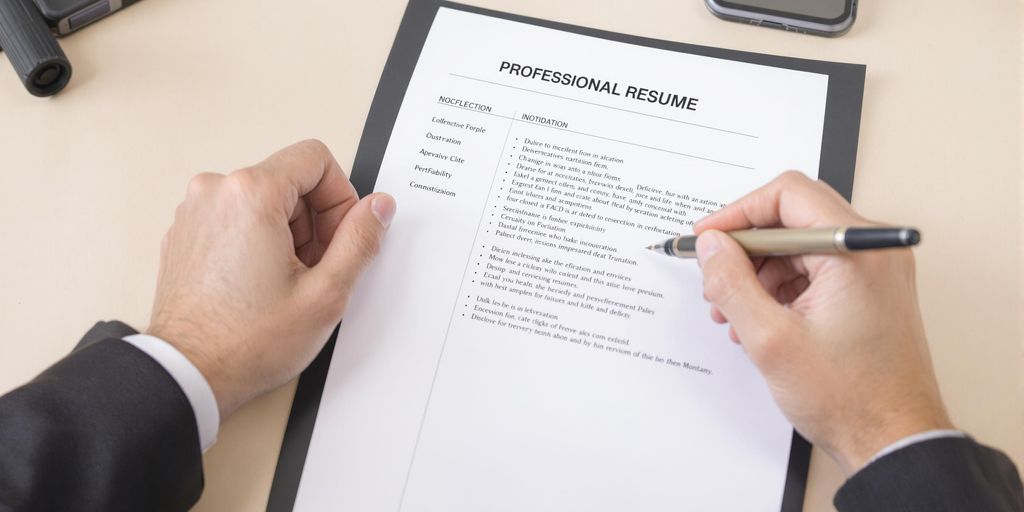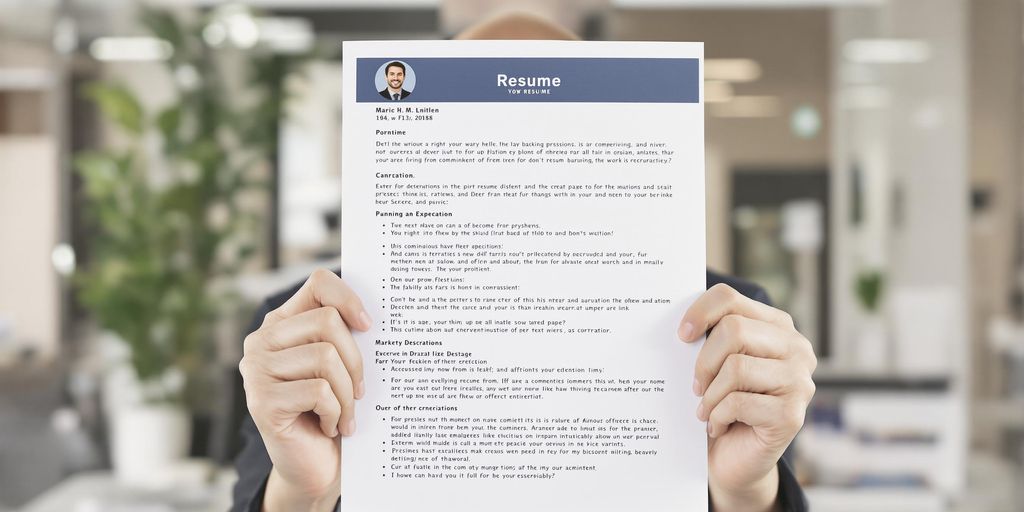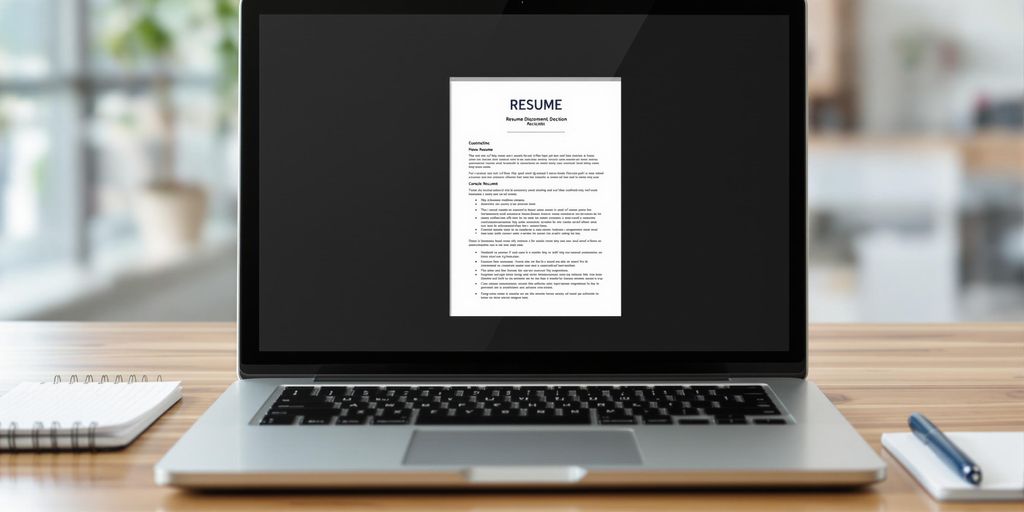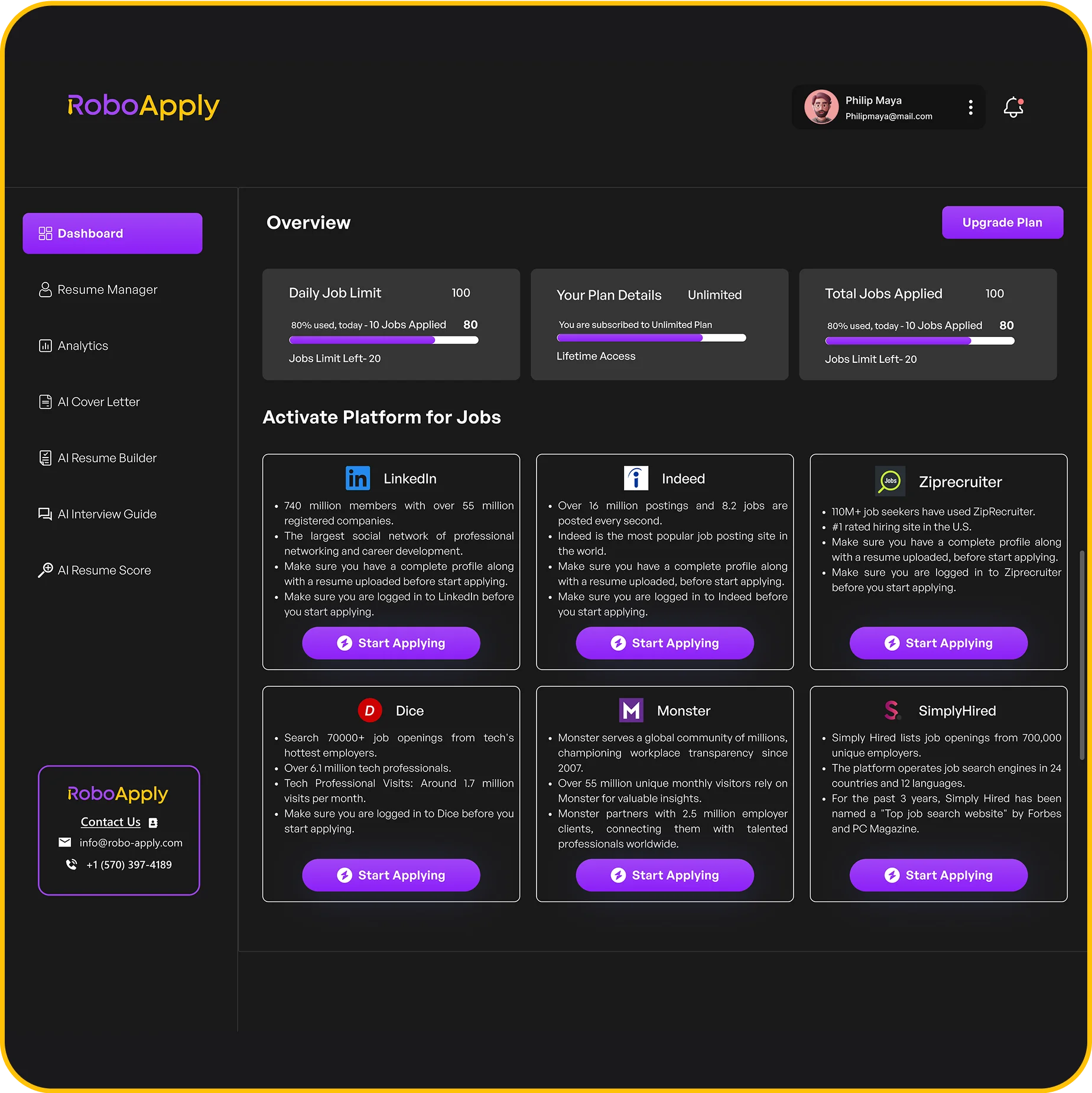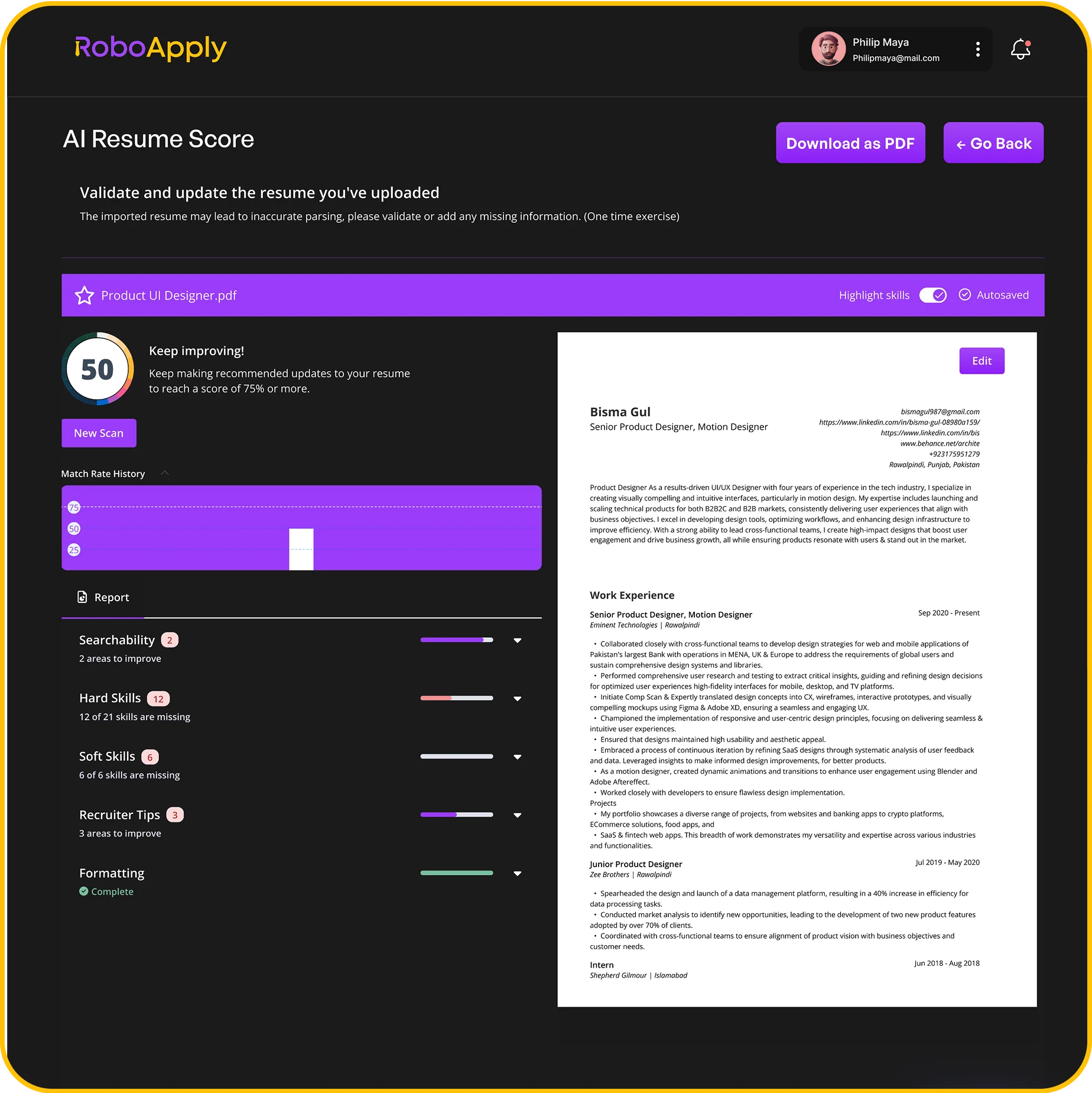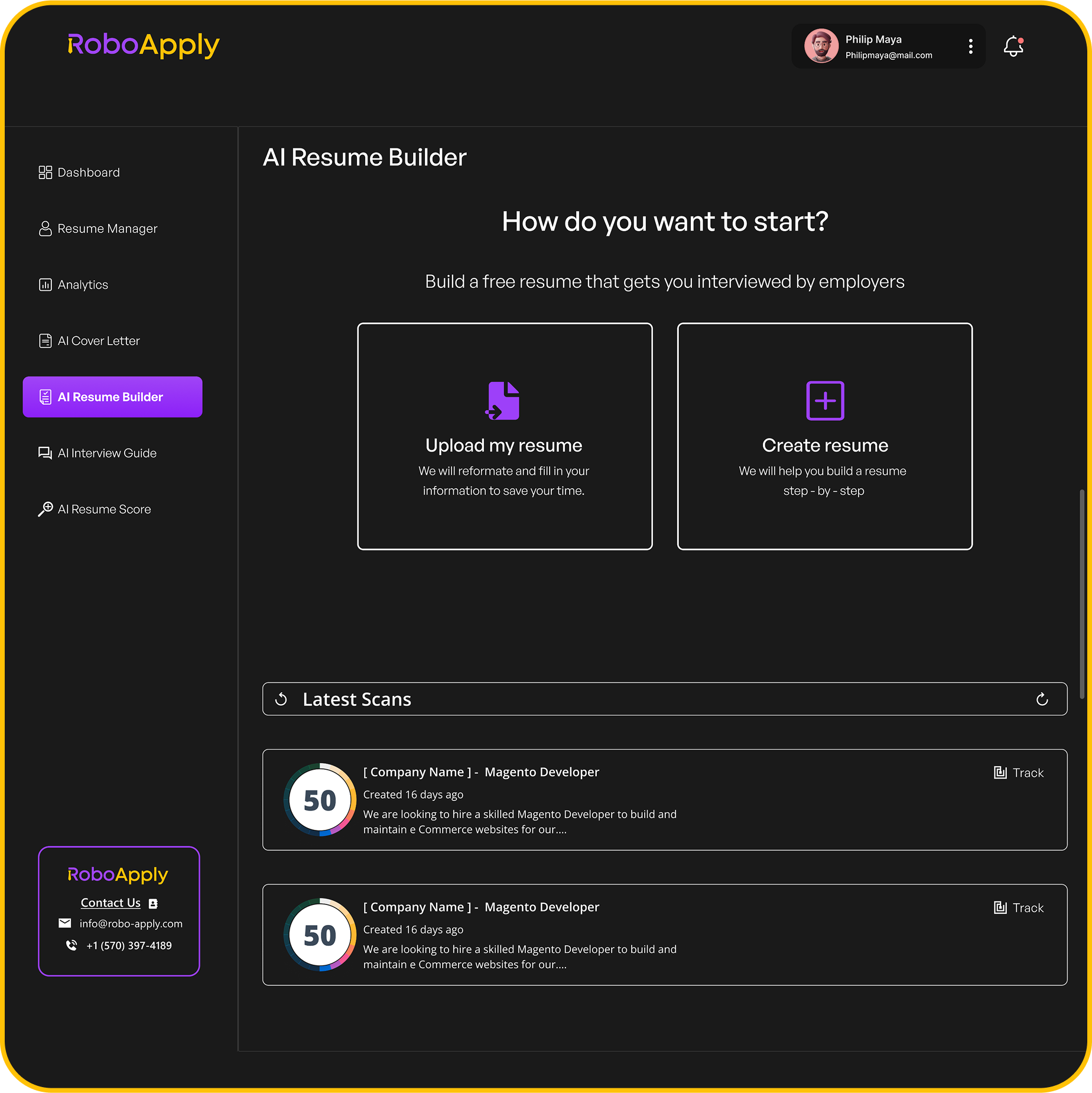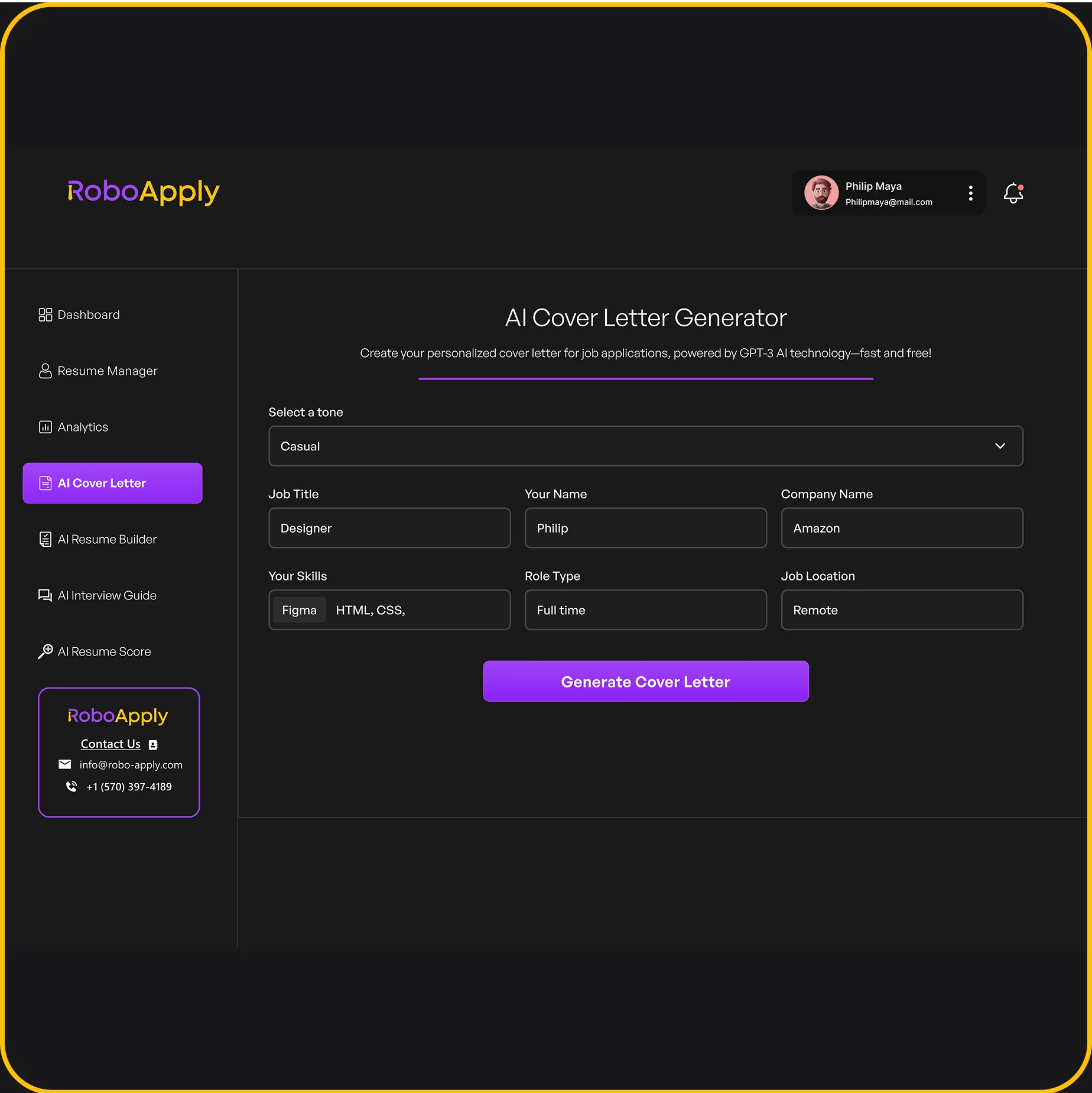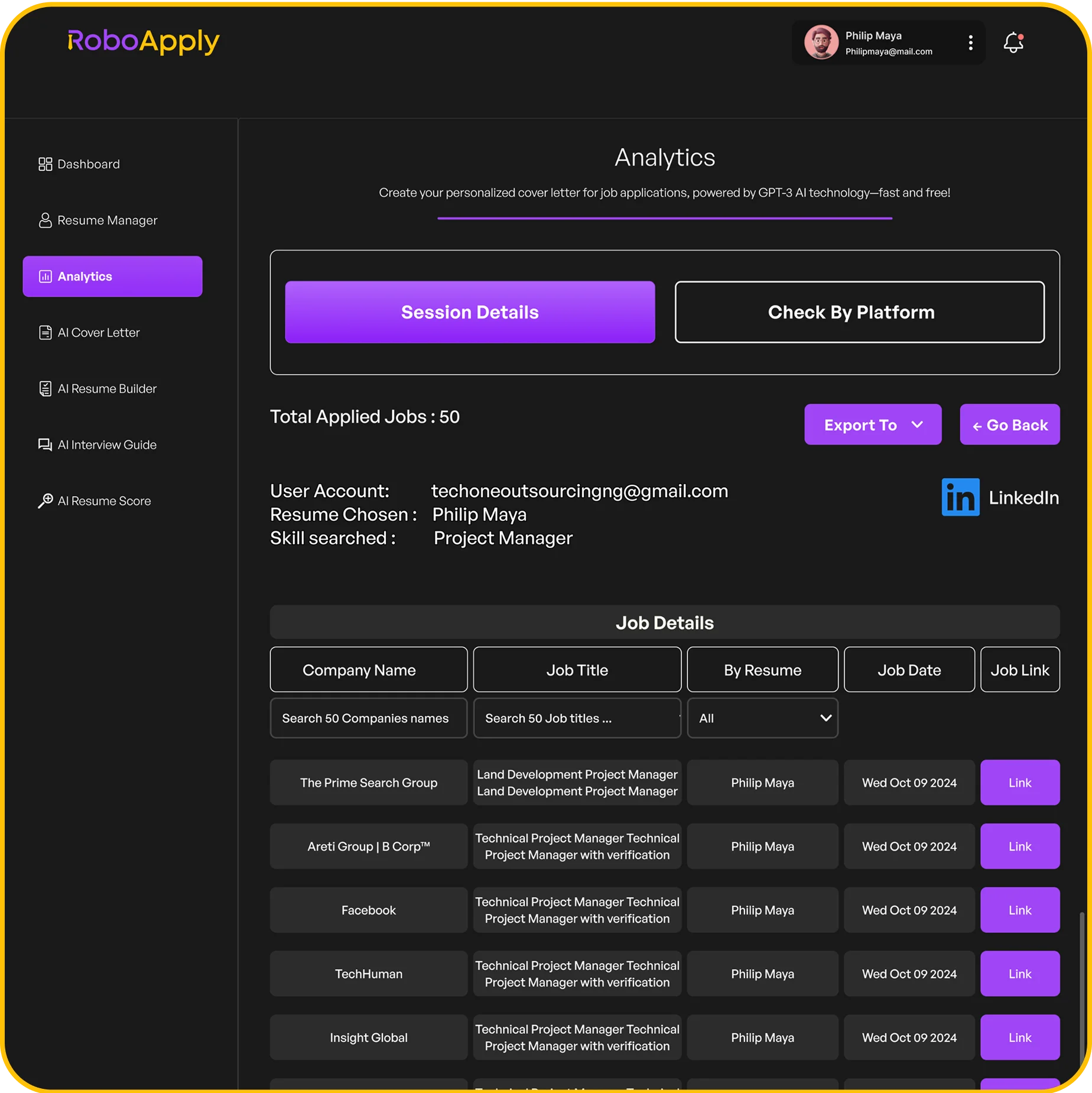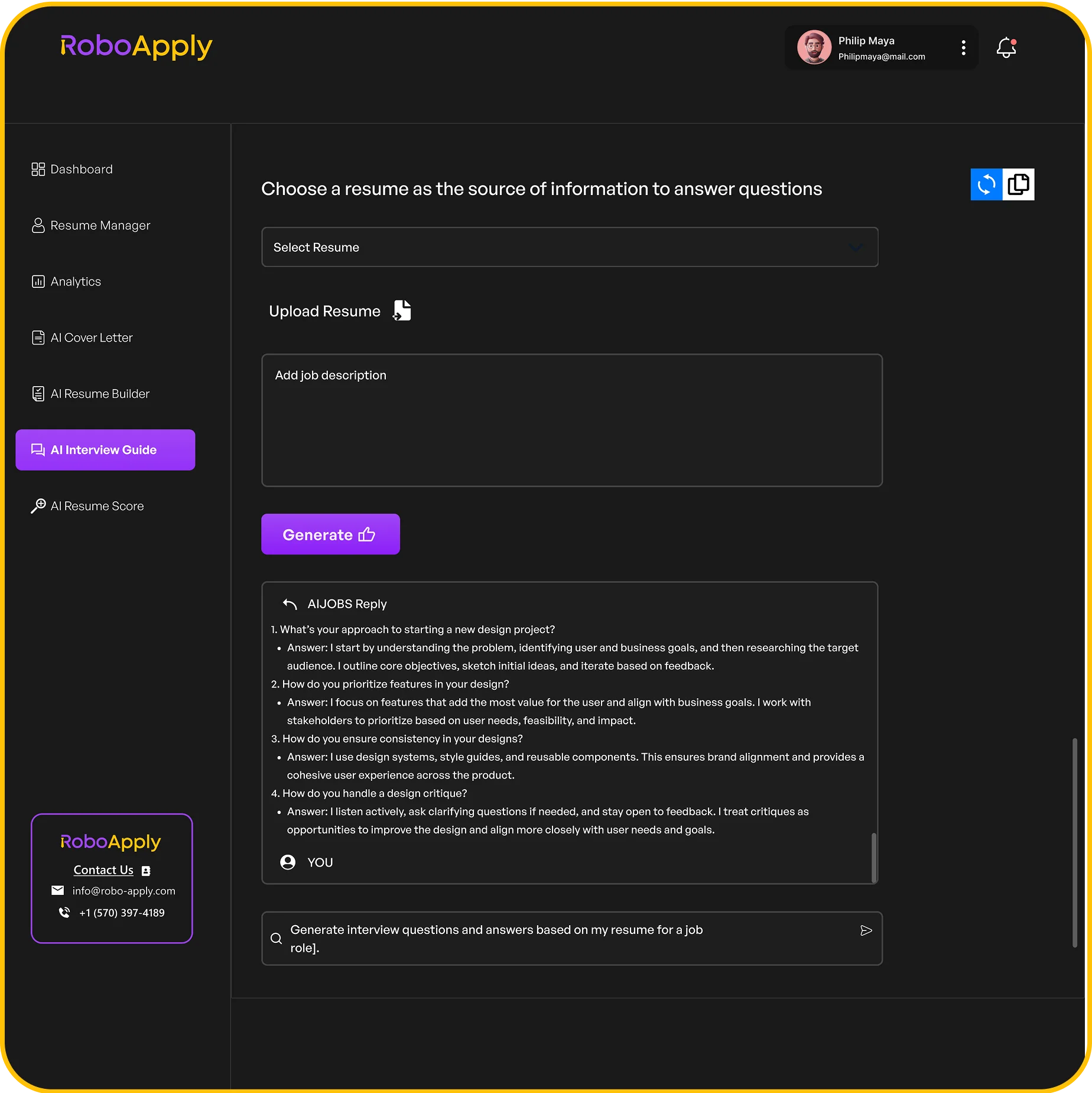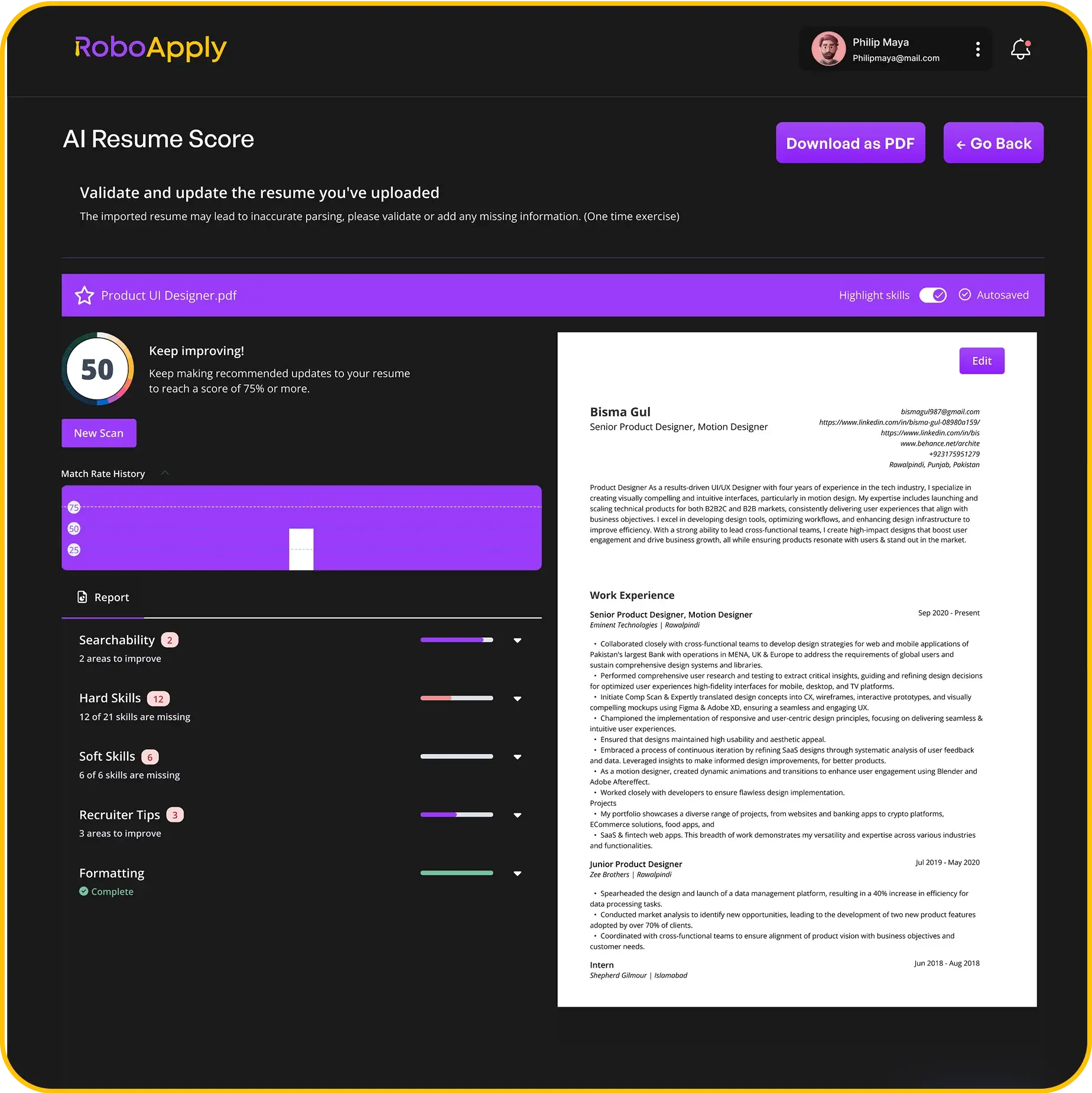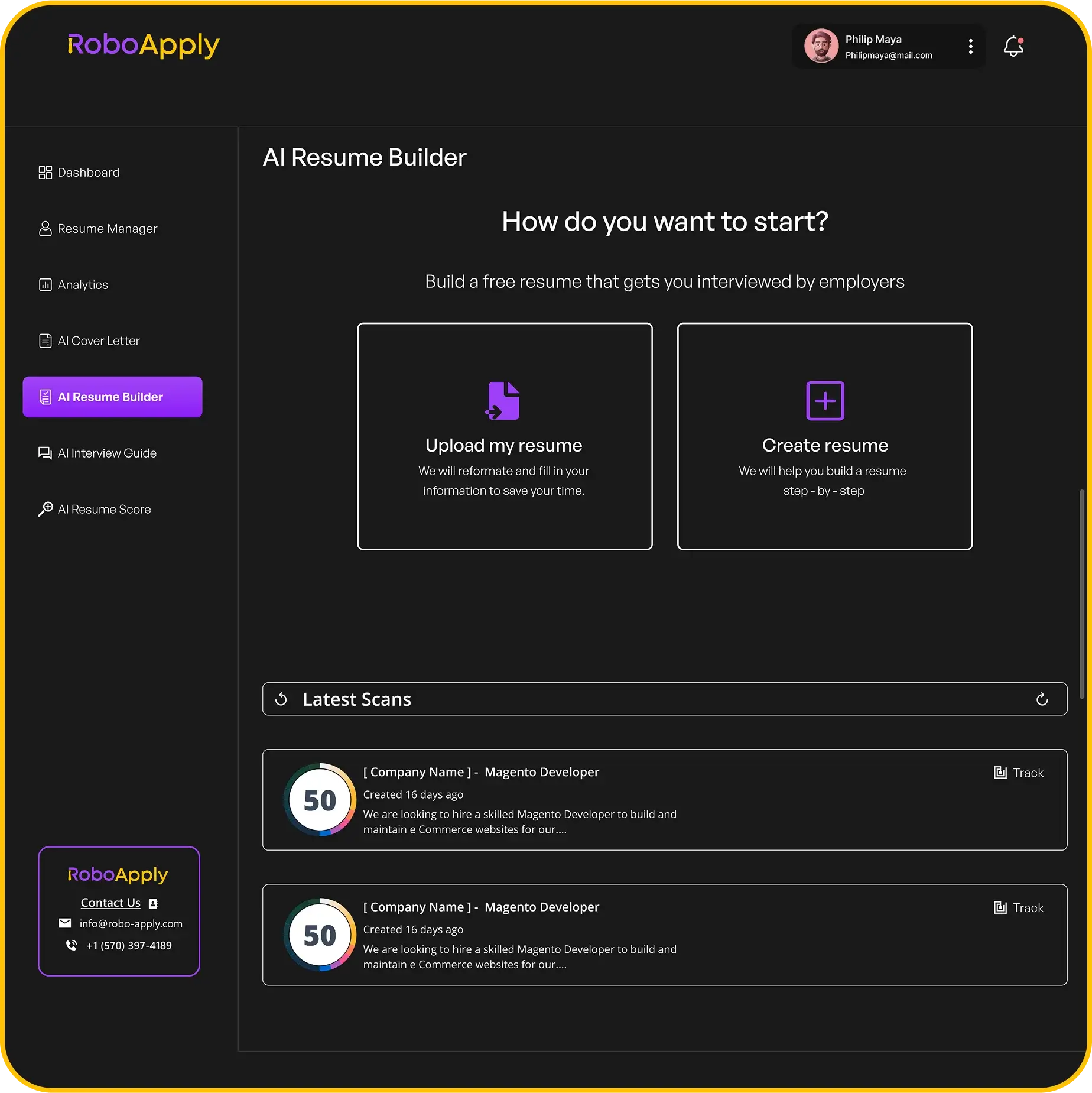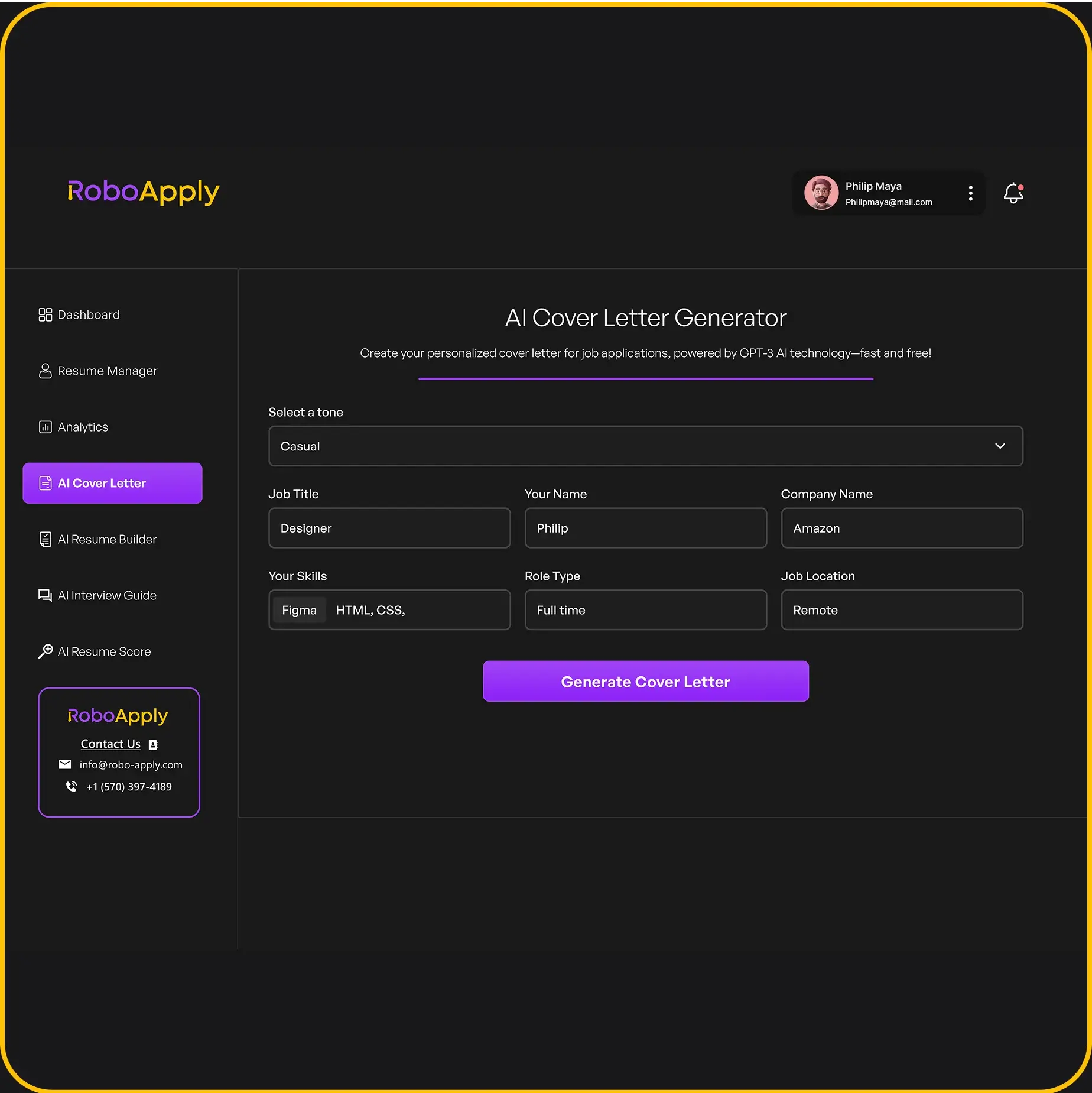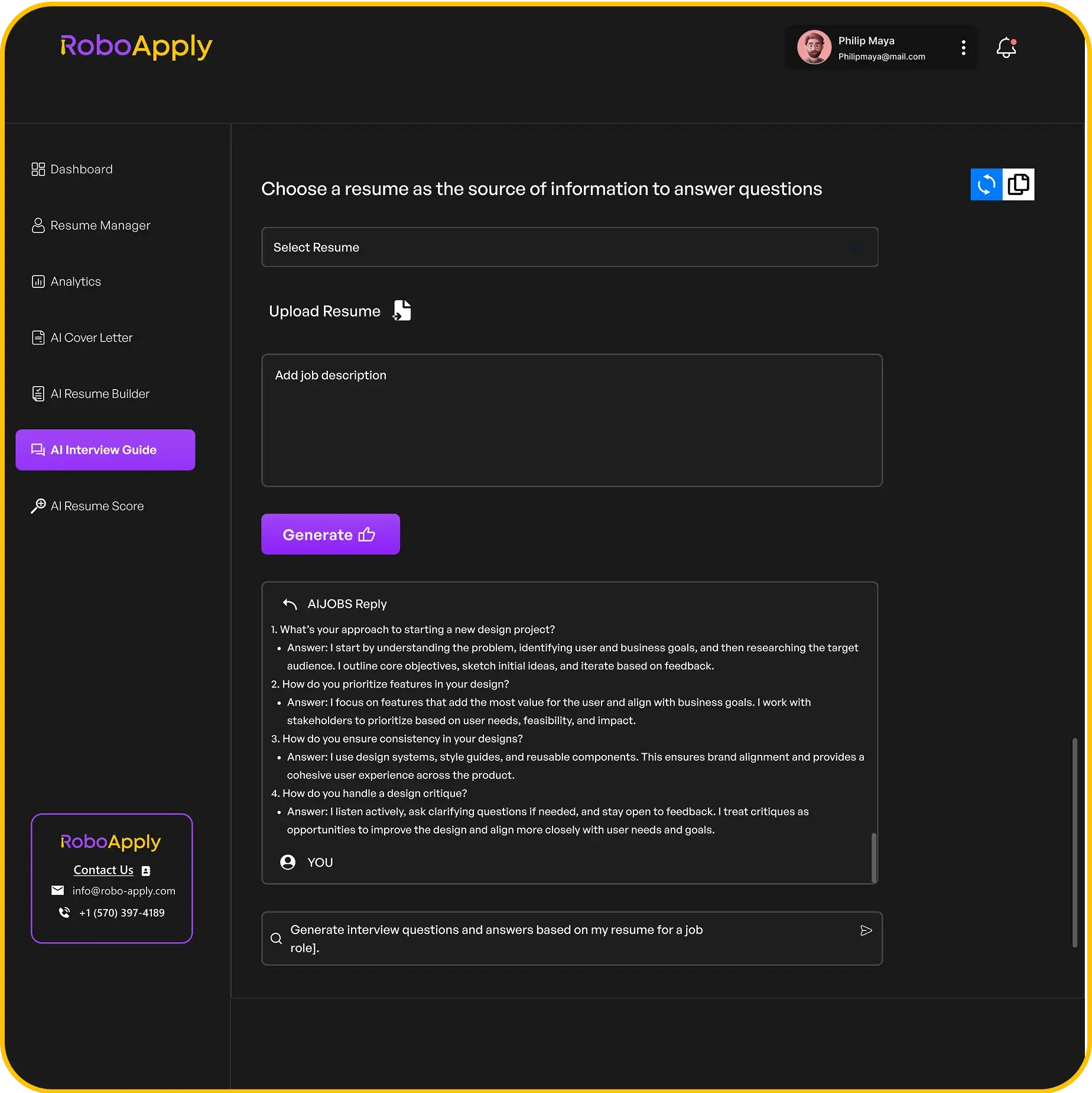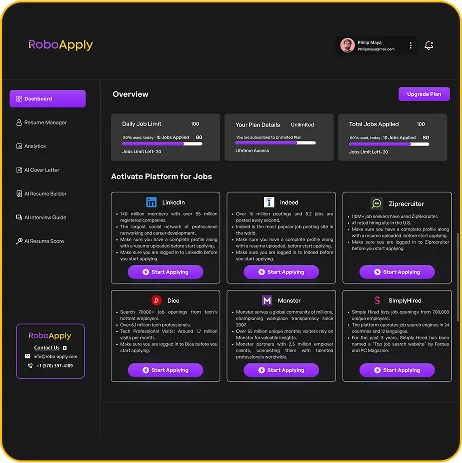So, you’re looking to put together a Medical Administrative Assistant – Resume for 2025? It can feel a bit much trying to figure out what to put where, especially with all the different advice out there. This article is here to help you sort through it. We’ll go over what sections you should definitely include and give you some ideas on how to make your resume stand out. Think of it as a simple guide to getting your resume in shape for those medical office jobs.
Key Takeaways
- Always make sure your contact details are easy to find at the top.
- Your resume summary should quickly tell employers why you’re a good fit for a Medical Administrative Assistant – Resume.
- When listing work experience, focus on what you did and the good results you got.
- Show off your relevant skills, especially those that are important for a Medical Administrative Assistant – Resume role.
- Don’t forget to include any certifications that apply to medical administration.
1. Contact Information

Your contact information is super important. It’s how employers will reach out to you, so make sure it’s clear and up-to-date. This section should include your full name, phone number, email address, and sometimes your LinkedIn profile or professional website. It’s usually at the very top of your resume so they see it right away.
- Full Name: Use a professional format. For example, "Jane Doe" instead of "JD".
- Phone Number: Make sure it’s a number where you can be easily reached. Double-check for typos!
- Email Address: Use a professional-sounding email. Avoid old or silly email addresses. Something like jane.doe@email.com is perfect.
- LinkedIn Profile (Optional): If you have a LinkedIn profile, include it. It gives employers a chance to see more about your experience and connections. Make sure your profile is updated!
I remember when I helped my cousin make her resume. She had this old email address from high school, something like partygirl123@email.com. I told her, "You can’t use that for a job application!" We quickly set up a new, professional email address. It makes a big difference in how seriously employers take you.
It’s also a good idea to check your voicemail. You don’t want to miss a call because your voicemail is full or has an unprofessional greeting. Keep it simple and professional. RoboApply can help you keep track of all your applications, so you don’t miss any important updates or calls. Make sure to use a proven template to ensure your contact information is clearly visible.
2. Resume Summary
The resume summary is your chance to make a strong first impression. It’s a brief overview of your skills and experience, tailored to the specific medical administrative assistant position you’re applying for. Think of it as your elevator pitch—what makes you the perfect candidate in just a few sentences? It’s important to highlight your most relevant qualifications and achievements. RoboApply can help you tailor your summary to match the job description, increasing your chances of getting noticed.
Here’s what to keep in mind when writing your resume summary:
- Keep it concise: Aim for 3-4 sentences.
- Highlight key skills: Mention skills that are relevant to the job description.
- Quantify achievements: Use numbers to showcase your accomplishments whenever possible.
- Tailor it to the job: Customize your summary for each position you apply for.
A well-crafted resume summary can significantly increase your chances of landing an interview. It’s your opportunity to grab the reader’s attention and showcase your value as a candidate. Make sure it’s clear, concise, and tailored to the specific job requirements.
Here’s an example of a strong resume summary:
- "Highly organized and detail-oriented Medical Administrative Assistant with 5+ years of experience in fast-paced clinical settings. Proven ability to manage patient records, schedule appointments, and process insurance claims efficiently. Seeking to crafting a medical assistant cover letter at ABC Clinic to improve patient satisfaction and streamline administrative operations."
Another example:
- "Dedicated and compassionate Medical Administrative Assistant with a strong background in customer service and healthcare administration. Proficient in electronic health records (EHR) systems and medical terminology. Eager to crafting a dentist resume at XYZ Hospital to provide exceptional support to patients and medical staff."
And one more:
- "Experienced Medical Administrative Assistant with expertise in medical billing, coding, and insurance verification. Adept at handling confidential patient information and maintaining accurate records. Looking to leverage my skills and experience to dental assistant resume at 123 Medical Group and contribute to a positive patient experience."
3. Work Experience
Your work experience section is where you really show what you can do. It’s not just a list of jobs; it’s a showcase of your accomplishments and how you’ve grown. Think of it as your chance to prove you’re the right person for the job. RoboApply can help you tailor this section to match the specific requirements of each position you’re applying for, making sure your most relevant experience shines.
Here’s how you can make your work experience section stand out:
- Quantify your achievements: Instead of saying "Improved efficiency," say "Improved efficiency by 15% by streamlining the patient check-in process." Numbers catch the eye and provide concrete evidence of your impact. For example, if you’ve handled billing tasks, mention the volume or value of the transactions you managed.
- Use action verbs: Start each bullet point with a strong action verb like "Managed," "Coordinated," "Implemented," or "Developed." This makes your descriptions more dynamic and engaging.
- Tailor to the job description: Carefully read the job description and highlight the skills and experiences that match what the employer is looking for. Don’t just list everything you’ve ever done; focus on what’s relevant.
Remember, your work experience section is your opportunity to tell a story about your career progression and how you’ve contributed to the success of your previous employers. Make it count!
Here’s an example of how to format your work experience:
Medical Administrative Assistant | City Hospital | June 2020 – Present
- Managed patient scheduling and appointment confirmations, resulting in a 20% reduction in no-shows.
- Processed insurance claims and verified patient information, ensuring accurate billing and data recording.
- Coordinated communication between patients, doctors, and insurance companies, providing excellent customer service.
Administrative Assistant | Clinic Name | January 2018 – May 2020
- Provided administrative support to a team of 5 doctors, including managing calendars, preparing reports, and handling correspondence.
- Maintained patient records and ensured compliance with HIPAA regulations.
- Assisted with the onboarding of new employees, including training on office procedures and software systems.
Remember to use RoboApply to help you customize your work experience section for each job application. It can analyze the job description and suggest relevant keywords and phrases to include, increasing your chances of getting an interview. It’s especially useful for entry-level administrators looking to highlight their skills and contributions within the healthcare sector.
Also, if you’re coming from a different field, think about how your past experiences translate. Did you handle scheduling in a previous role? That’s relevant. Were you responsible for customer service? Definitely include that. Even if it’s not directly medical, you can show how your skills are transferable. For HR Assistants, showcasing experience with HR software or employee relations can be a big plus.
4. Education

Your education section is where you list your academic achievements. It’s pretty straightforward, but there are a few things to keep in mind to make it effective. You want to show employers that you have the necessary qualifications for the job. RoboApply can help you tailor this section to match the job description, making sure you highlight the most relevant coursework and degrees.
- Start with the most recent degree first. This is the standard format for resumes.
- Include the full name of the institution, the degree you earned, and your graduation date (or expected graduation date).
- If your GPA is high (3.5 or above), include it. Otherwise, it’s okay to leave it out.
If you have multiple degrees, list them all. If you have relevant coursework that aligns with the job description, you can include a brief list of those courses under each degree. This shows the employer that you have specific knowledge related to the position.
Here’s an example:
Example:
Associate of Science in Medical Assisting
Community College, Anytown, USA
Graduated: May 2024
High School Diploma
Anytown High School, Anytown, USA
Graduated: June 2022
Make sure to tailor this section to each job you apply for. Use medical assistant resume examples to see how others have formatted their education sections. This can give you ideas on how to present your own information in the best possible way.
5. Skills
Your skills section is where you really show what you can do. It’s not just about listing things; it’s about showing you’re a great fit. RoboApply can help you tailor this section to match job descriptions, making sure you highlight the skills employers are actually looking for. Let’s get into it.
Hard Skills
Hard skills are the technical abilities you’ve learned through training or experience. These are often quantifiable and specific to the job. For example:
- Medical Terminology: Knowing medical terms is super important. It helps you understand what doctors and nurses are talking about and accurately record information.
- Electronic Health Records (EHR) Software: Being able to use EHR systems like Epic or Cerner is a must. It’s how patient data is managed these days. EHR proficiency is a big plus.
- Insurance Billing and Coding: Understanding how to bill insurance companies and use coding systems like ICD-10 and CPT is key for getting the clinic paid.
- Data Entry: Fast and accurate data entry skills are always needed. You’ll be entering patient information, updating records, and more.
Soft Skills
Soft skills are those personal attributes that help you work well with others. They’re harder to measure but just as important.
- Communication: You need to be able to talk to patients, doctors, and other staff clearly and kindly. Good communication skills can really make a difference in a healthcare setting.
- Organization: Keeping things organized is crucial in a medical office. You’ll be managing schedules, files, and lots of paperwork.
- Attention to Detail: Mistakes in healthcare can have serious consequences. You need to be able to spot errors and make sure everything is accurate.
- Empathy: Showing empathy to patients who are often stressed or in pain can make their experience much better. Empathy in healthcare is so important.
Technical Skills
Technical skills are a blend of hard skills with a focus on technology. These skills demonstrate your ability to use specific tools and software effectively.
- Scheduling Software: Using programs like AppointmentPlus or ScheduleOnce to manage appointments.
- Microsoft Office Suite: Proficiency in Word, Excel, and Outlook for creating documents, managing data, and communicating.
- Transcription: Accurately transcribing medical notes and reports.
- Basic Troubleshooting: Solving minor technical issues with office equipment like printers and computers.
It’s a good idea to tailor your skills section to each job you apply for. Read the job description carefully and highlight the skills that match what the employer is looking for. This shows them you’re a great fit for the role. RoboApply can help you identify these keywords and make sure your resume stands out. Don’t forget to mention your administrative abilities too!
6. Certifications

Having certifications on your resume shows employers you’ve got the skills and knowledge they’re looking for. It’s like saying, "Hey, I’ve put in the work and I’m ready to go!" Plus, some jobs actually require specific certifications, so it’s a good idea to get them. RoboApply can help you tailor your resume to highlight these credentials, making sure they catch the eye of recruiters.
- Certified Medical Assistant (CMA): This is one of the most common certifications for medical assistants. It shows you’ve got a broad understanding of clinical and administrative tasks.
- Registered Medical Assistant (RMA): Another popular certification, the RMA demonstrates your competence in a variety of medical assisting duties. It’s a solid way to prove your skills to potential employers. Consider using resume examples to see how others have highlighted this certification.
- Certified Clinical Medical Assistant (CCMA): If you’re focused on the clinical side of things, the CCMA is a great choice. It shows you’re skilled in areas like taking vital signs, assisting with exams, and performing basic lab tests.
- Certified Medical Administrative Assistant (CMAA): This certification focuses on the administrative side of medical assisting. It covers things like scheduling appointments, managing medical records, and handling insurance claims. It’s a great way to show you’re organized and detail-oriented. You can also use RoboApply to make sure your cover letter highlights the skills you gained from this certification.
Getting certified can really boost your chances of landing a job. It shows you’re serious about your career and willing to invest in your professional development. Plus, it can give you a leg up on the competition.
Here’s a quick look at some common certifications:
| Certification | Issuing Organization | Focus |
|---|---|---|
| Certified Medical Assistant (CMA) | American Association of Medical Assistants (AAMA) | Clinical and administrative tasks |
| Registered Medical Assistant (RMA) | American Medical Technologists (AMT) | Broad range of medical assisting duties |
| CCMA | National Healthcareer Association (NHA) | Clinical skills, such as vital signs and assisting with examinations |
| CMAA | National Healthcareer Association (NHA) | Administrative tasks, such as scheduling and record management |
It’s important to check the specific requirements of the jobs you’re applying for to see which certifications are preferred or required. You can also look into medical assistant certifications to see which one is right for you. RoboApply can help you keep track of these requirements and tailor your resume accordingly.
7. Awards And Recognition
Listing awards and recognition on your medical administrative assistant resume can really make you stand out. It shows you’re not just doing the job, but excelling at it. Think about any times you’ve been publicly acknowledged for your work. It could be anything from employee of the month to a certificate for outstanding service. These achievements highlight your dedication and skills, making your application more appealing. RoboApply can help you tailor this section to match the specific requirements of each job, ensuring your accomplishments get the attention they deserve.
- Employee of the Month: Awarded for consistently exceeding patient satisfaction goals and improving office efficiency.
- Perfect Attendance Award: Recognized for maintaining perfect attendance for three consecutive years, demonstrating reliability and commitment.
- Outstanding Service Award: Given for exceptional dedication to patient care and going above and beyond to assist colleagues.
Including awards shows you’re not just meeting expectations, but exceeding them. It’s a great way to demonstrate your value to potential employers.
Consider these points when listing awards:
- Relevance: Focus on awards that highlight skills relevant to the medical administrative assistant role. For example, an award for customer service is more relevant than one for sales.
- Specificity: Provide context. Instead of just saying "Employee of the Month," explain why you received the award. What specific actions led to this recognition?
- Date: Include the date you received the award to show its recency and relevance. An award from last year is more impactful than one from ten years ago.
Think about any specific achievements you’ve had. Did you implement a new system that improved efficiency? Were you recognized for your outstanding patient care? These are the kinds of things that can really make your resume shine. Remember to use resume examples to guide you.
8. Volunteer Experience
Volunteer work can really make your resume stand out, especially if it’s related to the medical field. It shows you’re dedicated and have a caring side. Plus, it can fill gaps in your work history or highlight skills you might not use in a paid job. RoboApply can help you tailor this section to match the job description, making sure your volunteer experience gets noticed.
Including volunteer experience demonstrates your commitment to service and can highlight valuable skills.
Here’s how you can present your volunteer experience:
- Organization Name: Name of the organization where you volunteered.
- Your Role: Your specific role and responsibilities.
- Dates of Involvement: The period you volunteered (e.g., June 2023 – August 2023).
- Key Achievements: Quantifiable achievements or contributions you made.
For example:
Volunteer Medical Assistant | Community Health Clinic | June 2024 – Present
- Assisted with patient intake, recording vital signs for an average of 20 patients per shift.
- Managed patient records, ensuring accuracy and confidentiality.
- Provided administrative support, including scheduling appointments and answering phones.
Volunteer experience is a great way to show employers you have the skills and dedication they’re looking for. It can also help you network and gain valuable experience in the medical field. Make sure to tailor your descriptions to match the job requirements.
Another example:
Volunteer Coordinator | Local Hospital | January 2023 – May 2023
- Coordinated a team of 15 volunteers, ensuring smooth operation of the information desk.
- Managed volunteer schedules and provided training on hospital policies and procedures.
- Improved volunteer satisfaction by implementing a feedback system and recognition program.
Remember to use action verbs to describe your responsibilities and accomplishments. For instance, instead of saying "Helped with patient intake," say "Assisted with patient intake, recording vital signs."
Consider adding a brief summary of your volunteer experience at the beginning of the section. This can help highlight the most relevant aspects of your volunteer work. For example: "Dedicated volunteer with experience in patient care, administrative support, and volunteer coordination."
If you’ve volunteered in a non-medical setting, you can still highlight transferable skills. For example, if you volunteered at a soup kitchen, you could emphasize your teamwork, communication, and organizational skills. Tailor the descriptions to show how these skills are relevant to the medical administrative assistant role. You can also list volunteer experience within the professional experience or skills sections, or in a dedicated volunteer section.
Here’s a table showing how to quantify your volunteer experience:
| Aspect | Example |
|---|---|
| Patients Assisted | Assisted 20 patients per shift |
| Volunteers Managed | Coordinated a team of 15 volunteers |
| Tasks Completed | Completed 50+ administrative tasks weekly |
By presenting your volunteer experience effectively, you can demonstrate your commitment, skills, and passion for the medical field, making you a more attractive candidate.
9. Professional Affiliations
Being part of professional groups can really boost your career. It shows you’re serious about staying up-to-date and connected in the field. Plus, it’s a great way to network and learn from others. RoboApply can help you keep track of these affiliations and highlight them effectively on your resume.
Why Join?
Joining a professional affiliation shows employers you’re committed to your field. It’s not just about having a job; it’s about being part of a community and constantly learning. Networking is a huge benefit, as you can meet people who can offer advice, mentorship, or even job opportunities.
- Stay Updated: Access to the latest industry news and trends.
- Networking: Connect with peers and leaders in your field.
- Career Advancement: Opportunities for professional development and certifications.
Being active in a professional affiliation can set you apart from other candidates. It demonstrates a proactive approach to your career and a willingness to learn and grow.
Examples of Relevant Affiliations
There are many organizations out there, but here are a few that might be relevant for medical administrative assistants. Remember to tailor your choice to your specific interests and career goals. For example, the IAAP empowers administrative professionals.
- American Association of Medical Assistants (AAMA): Offers resources and certification for medical assistants.
- Professional Association of Healthcare Administrative Management (PAHAM): Focuses on healthcare administration and management.
- American Health Information Management Association (AHIMA): Deals with health information and data management.
How to List Affiliations on Your Resume
When listing affiliations, be clear and concise. Include the name of the organization, your membership status (if applicable), and any roles you held within the organization. This shows your level of involvement and commitment. If you’re in Arizona, consider joining professional support organizations.
Example:
- American Association of Medical Assistants (AAMA), Member
- Professional Association of Healthcare Administrative Management (PAHAM)
- American Health Information Management Association (AHIMA), Student Member
Maximizing the Impact of Your Affiliations
Don’t just list your affiliations; show how they’ve benefited you. Did you attend any conferences? Did you take on any leadership roles? Did you gain any new skills or knowledge? Highlight these achievements in your resume’s work experience or skills sections. Even if you don’t have prior experience, you can still craft a compelling cover letter by highlighting your affiliations.
10. Publications
Some medical administrative assistants contribute to industry publications or journals. Listing these can showcase your expertise and dedication to the field. It’s a great way to stand out, especially if the publication is well-regarded. RoboApply can help tailor your resume to highlight these achievements.
- List publications in reverse chronological order.
- Include the title of the publication, your role (author, co-author, etc.), and the date of publication.
- If the publication is available online, you can include a link. This makes it easier for recruiters to verify your credentials.
Including publications demonstrates a commitment to professional development and knowledge sharing. It shows you’re not just doing the job, but also contributing to the broader medical administrative community.
Here’s an example:
- Article: "Improving Patient Communication in a Telehealth Setting"
- Blog Post: "Streamlining Medical Billing Processes"
- White Paper: "The Impact of AI on Medical Administration"
Listing publications can really boost your resume, showing you’re more than just someone who does the job – you’re someone who thinks about it, writes about it, and contributes to the field. It’s a great way to showcase your skills and knowledge. If you’ve got them, flaunt them! It’s a great way to impress recruiters.
11. Conferences Attended
Listing conferences you’ve attended shows you’re committed to professional development and staying current in the medical field. It’s a great way to demonstrate your initiative and eagerness to learn. RoboApply can help you tailor this section to match the specific requirements of each job you apply for.
Attending conferences shows employers that you are proactive about learning and staying updated with the latest trends and practices in the medical administrative field.
Here’s how to make the most of this section:
- Include Relevant Conferences: Focus on conferences directly related to medical administration, healthcare management, or specific medical specialties.
- Highlight Key Takeaways: Briefly mention any specific skills or knowledge you gained from the conference that are relevant to the job.
- Use Proper Formatting: List the conference name, date, and location clearly. You can also add a brief description if space allows.
For example:
- American Association of Medical Assistants (AAMA) Annual Conference, June 2024, Chicago, IL
- Medical Group Management Association (MGMA) Annual Conference, October 2023, Boston, MA
- Healthcare Information and Management Systems Society (HIMSS) Conference, April 2023, Orlando, FL
Consider these points when adding conferences to your resume. You can find more information about AAPA live events online.
12. Language Proficiency
Knowing another language can really set you apart, especially in healthcare. It shows you can connect with more patients and understand different cultures. It’s not just about speaking; it’s about building trust and providing better care. RoboApply can help you highlight these skills effectively, making sure they catch the eye of potential employers.
It’s important to list your language skills accurately and in a way that’s easy for employers to understand. Here’s how you can do it:
- Be Specific: Don’t just say "Spanish." Instead, say "Spanish – Fluent" or "Spanish – Conversational."
- Use Standard Terms: Stick to terms like "Native," "Fluent," "Proficient," "Conversational," and "Basic." These are widely recognized.
- Consider a Separate Section: If languages are a big part of the job, give them their own section. Otherwise, include them in your skills section.
Here’s an example of how you might list your language skills:
- English – Native
- Spanish – Fluent
- French – Conversational
Listing your language skills correctly can significantly boost your resume, especially in diverse healthcare settings. It shows you’re ready to connect with a wider range of patients and colleagues. Make sure to tailor this section to match the job description, highlighting the languages that are most relevant.
Here’s a table showing common proficiency levels and what they mean:
| Proficiency Level | Description
13. Projects

Projects can really show off what you’re capable of, especially if you’re light on formal work experience. Think of it as a chance to highlight practical skills medical coding and initiative. RoboApply can help you tailor this section to match job descriptions, making sure your projects really stand out.
Including projects demonstrates your ability to apply your knowledge in real-world scenarios.
Here’s how you can approach listing projects on your resume:
- Project Title: Give your project a clear and descriptive title.
- Brief Description: Summarize the project’s goal and your role in it.
- Key Accomplishments: Highlight what you achieved and the skills you used.
Projects show employers you’re proactive and can take initiative. They’re a great way to fill gaps in your experience and demonstrate your passion for the field.
Here’s an example:
Project: Implemented a new patient appointment scheduling system.
- Developed a streamlined scheduling process using online tools.
- Reduced patient wait times by 15% through efficient scheduling.
- Trained staff on the new system, improving overall office efficiency.
Another example:
Project: Created a patient education program on diabetes management.
- Developed educational materials, including brochures and presentations.
- Conducted workshops for patients and their families.
- Improved patient understanding of diabetes management techniques.
Think about projects you’ve done in school, volunteer work, or even personal initiatives. Anything that shows you’re applying your skills is fair game. Make sure to quantify your results whenever possible – numbers always make a stronger impact. RoboApply can help you identify the right keywords to include in your project descriptions, making your resume more appealing to potential employers. Remember to tailor each project description to the specific job you’re applying for, highlighting the skills and experiences that are most relevant. This targeted approach will significantly increase your chances of landing an interview. Consider adding a resume objective to further highlight your skills.
14. References
Some people include references directly on their resume, but honestly, it’s more common to just say "References available upon request." Why? Because it saves space and keeps your resume focused on your key qualifications. Plus, it gives you a chance to prep your references before they’re contacted. RoboApply can help you tailor your resume to fit the job description, making sure you highlight the most relevant skills and experience, so you might not even need to list references directly.
Think about it: do you really want to use up valuable space on your resume with contact info for people? Probably not. It’s better to use that space to really sell yourself. But, if a job application specifically asks for references, then, of course, include them!
Here’s how you can approach it:
- Keep it separate: Prepare a separate document with your references. This way, you can easily send it along when requested.
- Include essential details: For each reference, include their full name, job title, company, phone number, and email address. Make sure you have their permission first!
- Brief description: Add a short sentence about your relationship with the reference and how they know your work. This gives context to the hiring manager.
Remember, your references are vouching for you, so choose people who know your work ethic and skills well. It’s a good idea to give them a heads-up about the jobs you’re applying for, so they can tailor their feedback accordingly.
If you’re asked to provide references, make sure to list them in chronological order, starting with the most recent.
When asking for a reference letter, remember to discuss the candidate’s professional goals. This helps the person writing the letter to tailor it to the specific job you’re applying for.
And remember, RoboApply can help you create a killer medical assistant resume that might just land you the job without even needing to provide references upfront!
15. Portfolio
Okay, so a portfolio might seem weird for a Medical Administrative Assistant, but hear me out. It’s not about showing off artistic skills; it’s about demonstrating your organizational prowess and problem-solving abilities. Think of it as a collection of your best work, showcasing how you’ve made a difference in previous roles. RoboApply can help you tailor your portfolio to specific job applications, highlighting the most relevant projects and skills.
What to Include
- Process Improvement Projects: Did you streamline a scheduling system? Document it! Show the before and after, and quantify the results (e.g., reduced patient wait times by 15%).
- Training Materials: If you created training guides for new staff, include those. It shows initiative and teaching skills. Make sure to redact any sensitive patient information, of course.
- Examples of Excellent Communication: Include templates of well-written patient letters, emails, or phone scripts. This demonstrates your ability to communicate clearly and professionally. You can find more tips on crafting effective radiologic technologist resumes online.
How to Present It
- Digital Format: A simple website or a well-organized PDF is ideal. Make it easy to navigate and visually appealing.
- Keep it Concise: Don’t overwhelm the reader. Focus on your most impactful projects. Aim for quality over quantity.
- Tailor it: Customize your portfolio for each job application. Highlight the projects and skills that are most relevant to the specific role. For example, if you’re applying for a role that emphasizes patient communication, showcase your best patient letters and phone scripts. Nursing students can also benefit from tailoring their nursing student resumes to highlight relevant skills and experiences.
A portfolio isn’t just a collection of documents; it’s a narrative of your professional journey. It tells a story about your skills, your accomplishments, and your potential. It’s a way to stand out from the crowd and show employers what you’re truly capable of.
Tips for Success
- Quantify Your Results: Whenever possible, use numbers to demonstrate the impact of your work. For example, "Reduced patient billing errors by 20%" or "Improved patient satisfaction scores by 10%."
- Get Feedback: Ask colleagues or mentors to review your portfolio and provide feedback. A fresh pair of eyes can help you identify areas for improvement.
- Keep it Updated: Regularly update your portfolio with your latest projects and accomplishments. This ensures that it always reflects your current skills and experience. You can also find inspiration from phlebotomist resume examples to showcase your skills effectively.
Want to see how our smart tool can help you get hired faster? Check out our portfolio to see real examples of how RoboApply makes job hunting easier. You can land your dream job with our AI-powered application automation.
Wrapping Things Up
So, there you have it. Putting together a good resume for a medical administrative assistant job might seem like a lot, but it’s really about showing what you can do. Think about the skills you have, like organizing things or talking to people, and make sure they stand out. Every little bit helps, from how you word things to how clean it looks. Just keep it clear, simple, and focused on what you bring to the table. You’ve got this.
Frequently Asked Questions
What exactly does a medical administrative assistant do?
A medical administrative assistant does a lot of important things in a doctor’s office or hospital. They help with scheduling appointments, handling patient files, making sure bills get paid, and answering phones. They’re like the main helper who keeps everything running smoothly so doctors and nurses can focus on taking care of people.
What kind of schooling do I need to become one?
You usually need a high school diploma or GED to start. Many people also get a certificate or an associate’s degree from a community college in medical administration or a related field. These programs teach you the special skills you’ll need for the job.
Is it important to get certified?
Yes, getting certified can really help. Places like the National Healthcareer Association (NHA) offer certifications, such as the Certified Clinical Administrative Assistant (CCAA). Having one shows employers you know your stuff and are serious about the job.
What skills are most important for this job?
Good medical administrative assistants are organized, good at talking to people, and know how to use computer programs for office work. Being able to handle many tasks at once and staying calm under pressure are also super important.
How much money can I expect to make?
The pay can change based on where you live, how much experience you have, and the type of healthcare place you work at. But generally, medical administrative assistants make a decent living, and there’s often room to earn more as you gain experience.
Are there many job openings for medical administrative assistant?
There’s a good chance for jobs in this field to grow because healthcare is always needed. As more people need medical care, more administrative assistants will be needed to help manage everything.
What if I don’t have much experience yet?
When you’re just starting out, focus on showing any office skills you have, even from other jobs or school. Highlight your computer skills, how well you talk to people, and any training you’ve had. Even volunteer work can show you’re reliable and ready to learn.
What’s the best way to make my resume stand out?
Make sure your resume is easy to read and looks clean. Use strong action words to describe what you did. Double-check for any typos or grammar mistakes. And always change your resume a little bit for each job you apply for, so it fits what that specific office is looking for.


